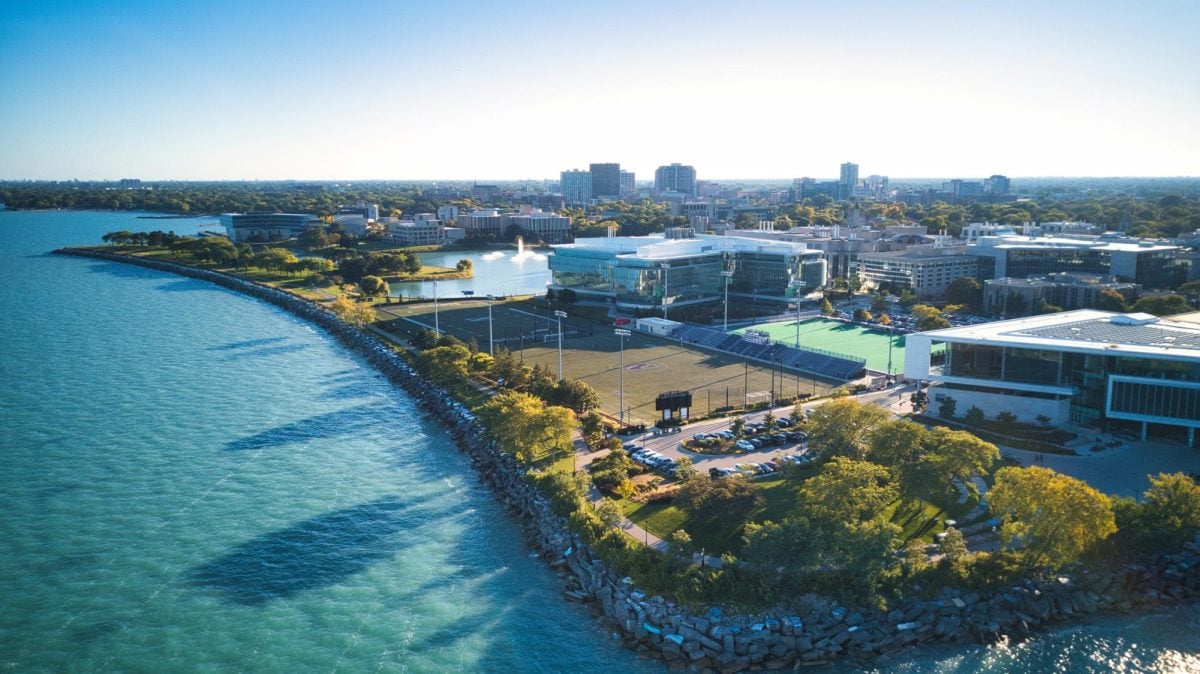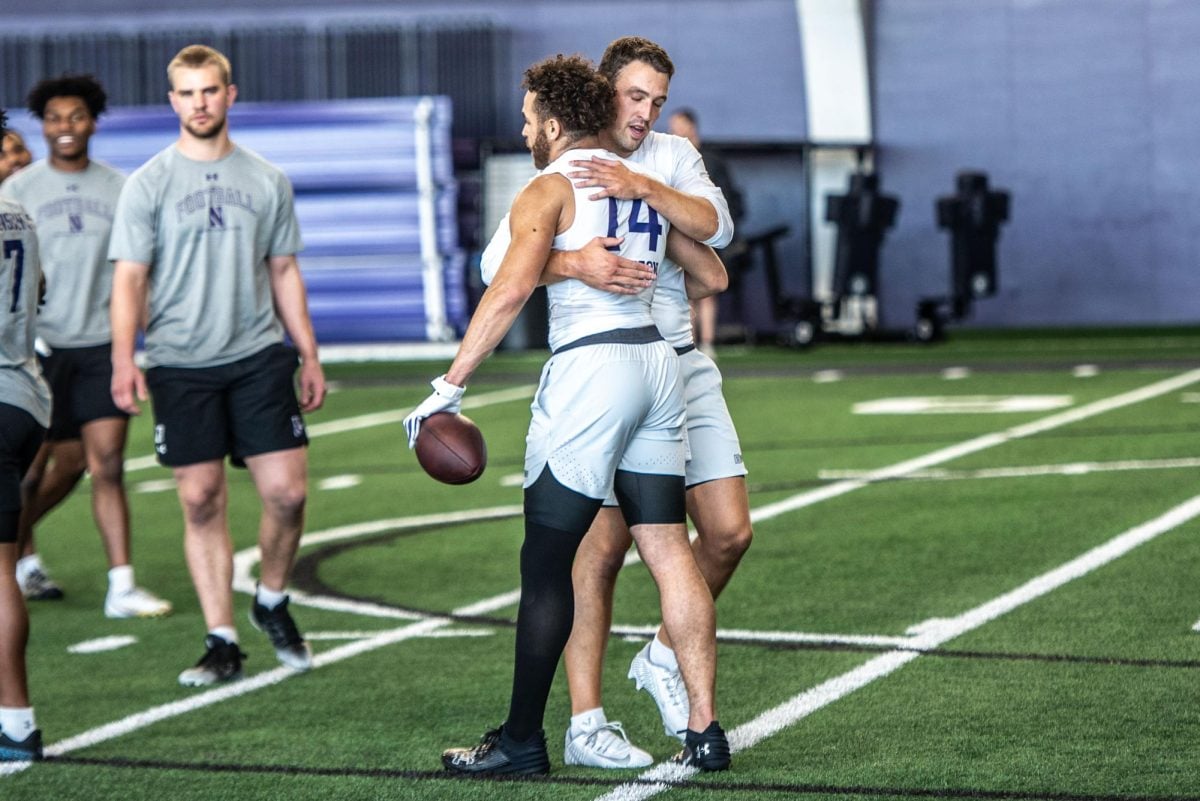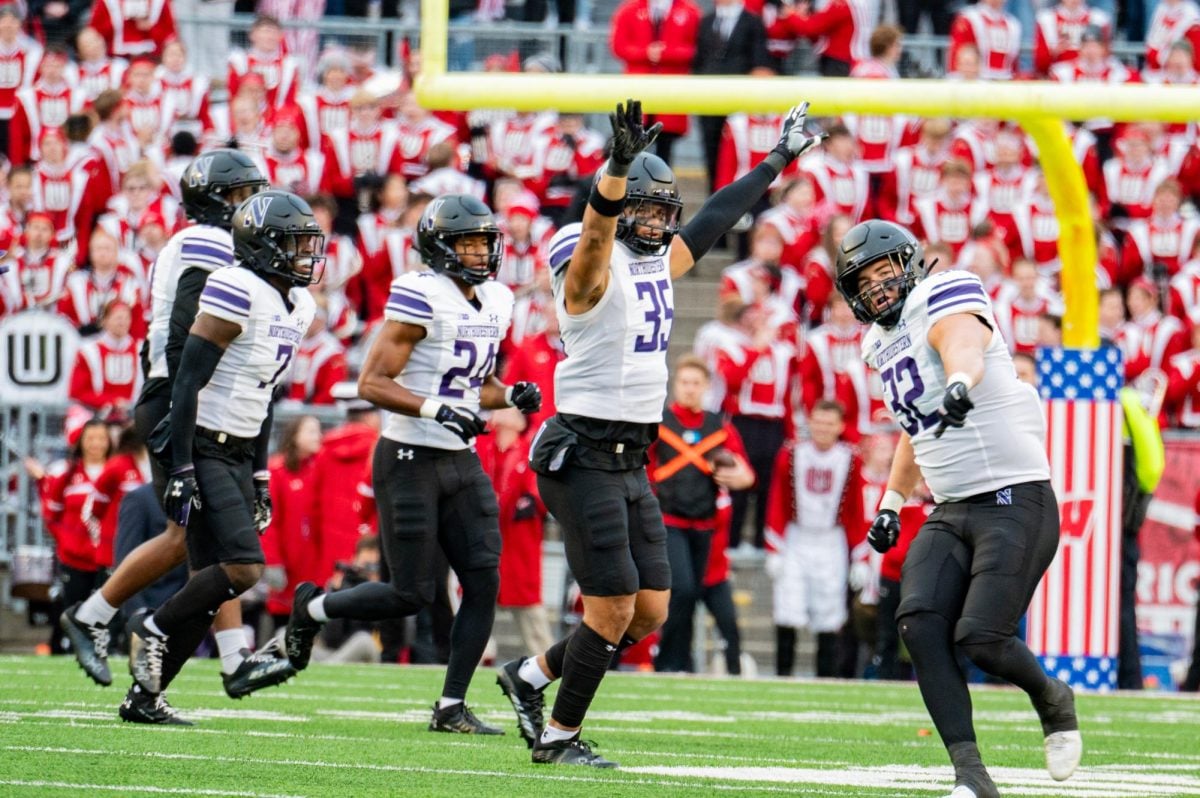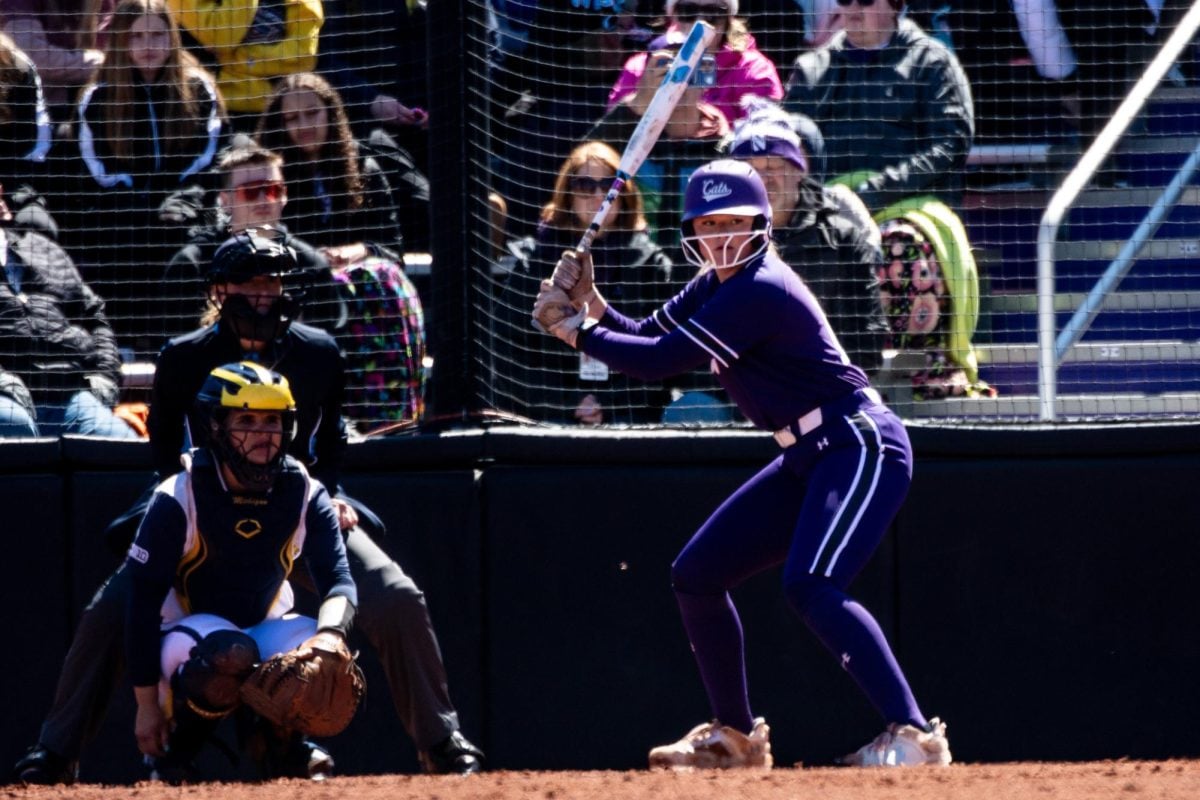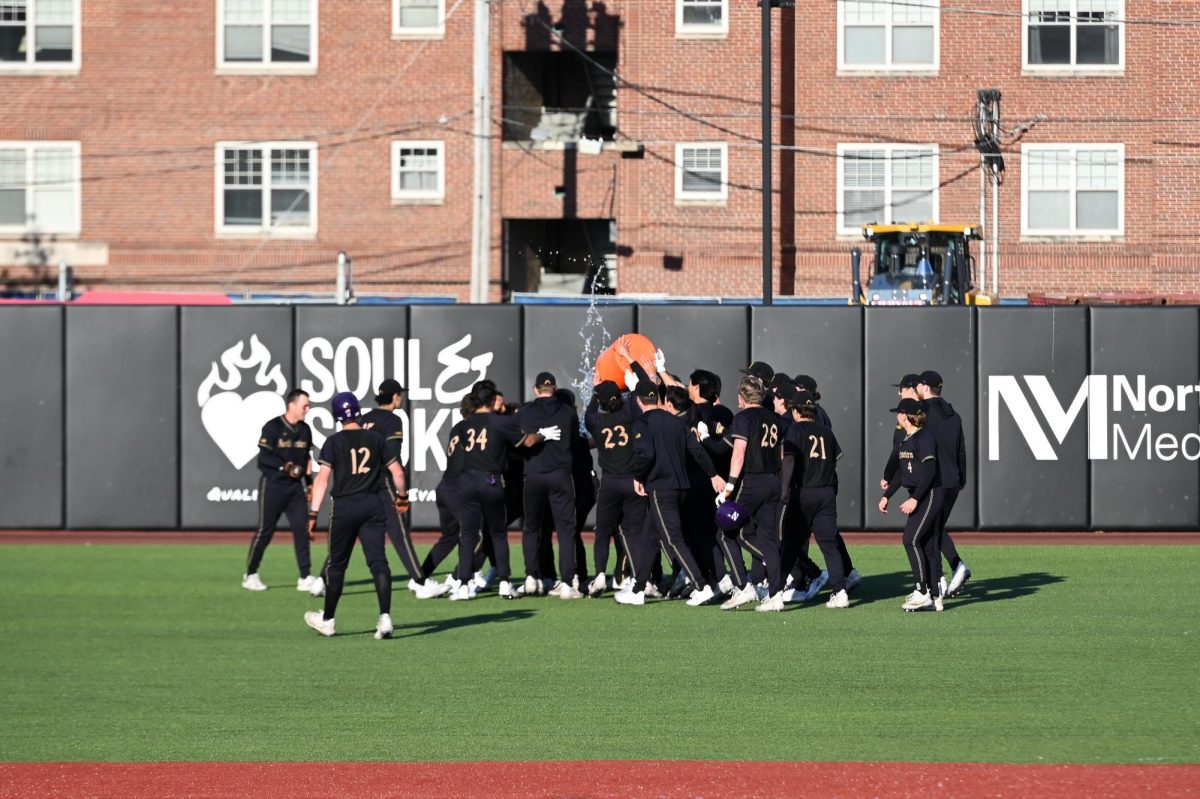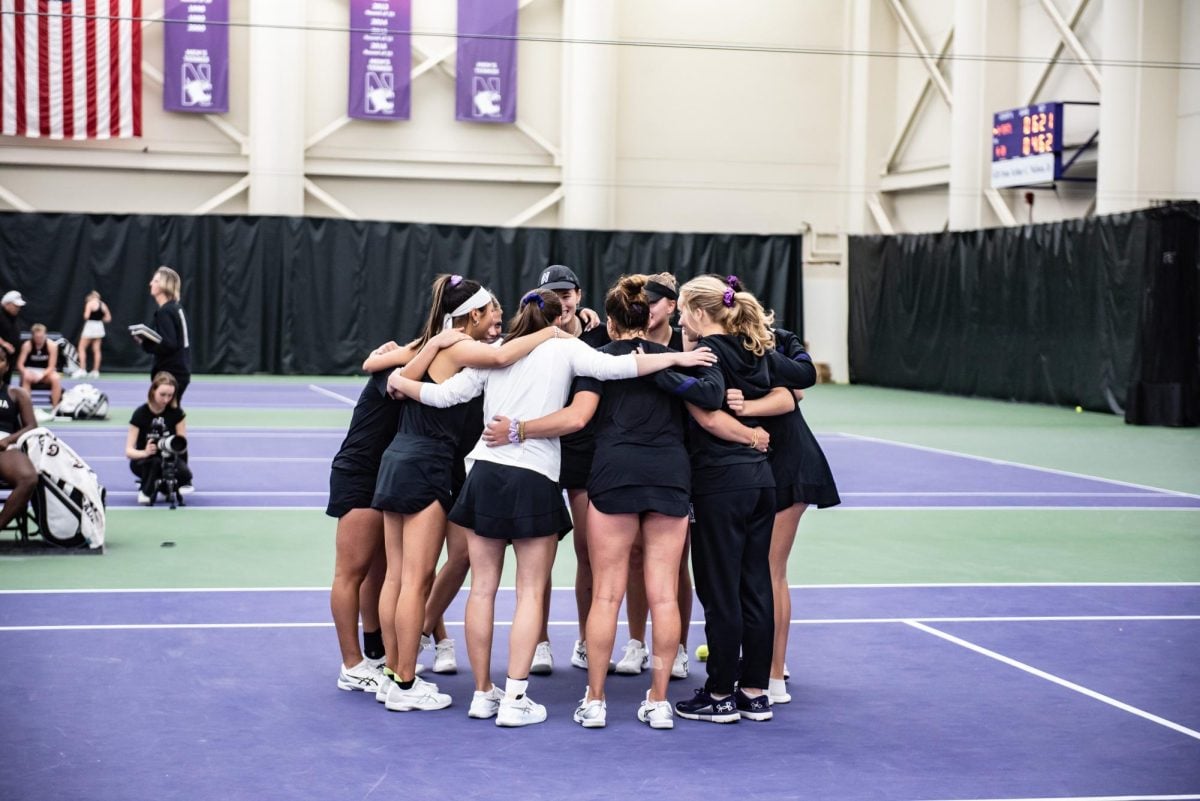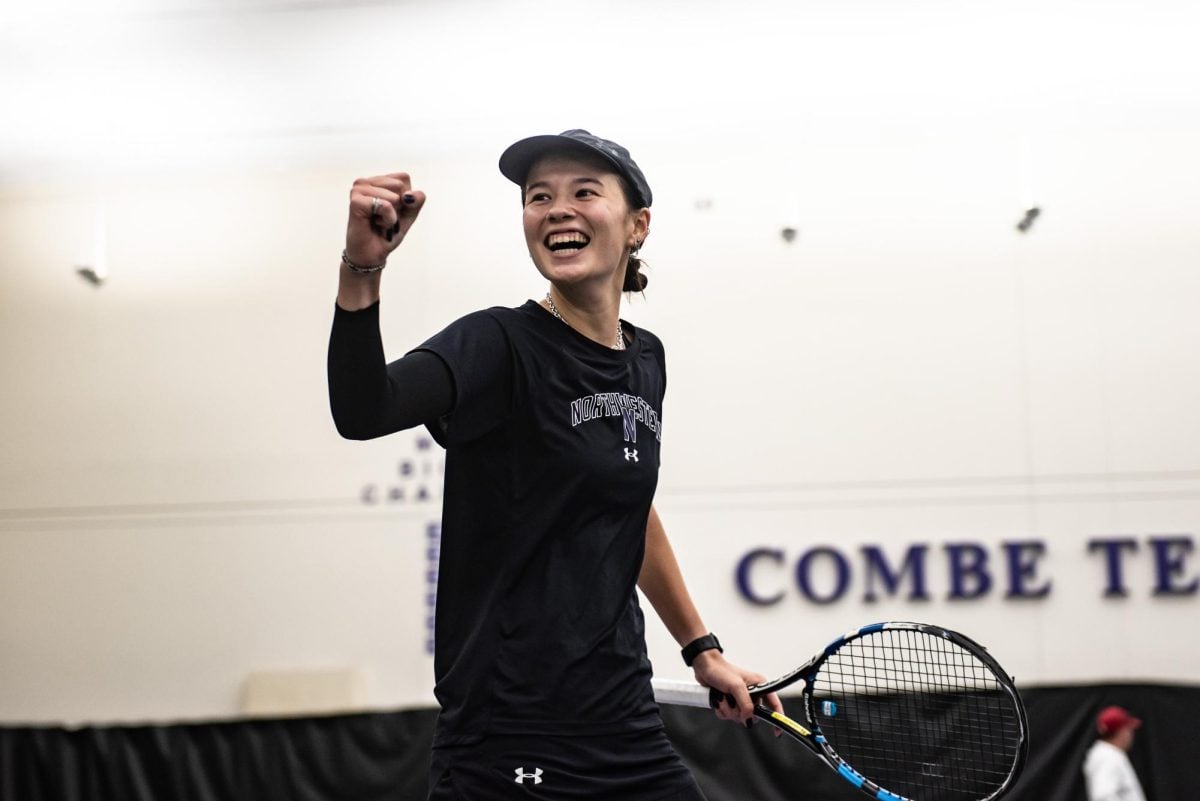It’s more than 200 pages long and wields the power to bring athletic empires to the ground. Those who know its contents fear it, and those who don’t eventually get burned.
When it comes to college athletics, the NCAA rulebook is truly a vengeful god.
“It’s something I look at every single day, ” Northwestern athletic director Jim Phillips said. “How would you expect every student-athlete to know every rule within? I don’t know it verse by verse.”
Therein lies the problem that has proved all but fatal for many collegiate athletic programs. Six Ohio State football players weren’t aware that they couldn’t trade football memorabilia in exchange for tattoos, a violation that led to five-game suspensions for five of the players.
Senior left tackle Al Netter said the lack of knowledge of the rules that doomed the Buckeyes couldn’t happen at NU.
“I don’t know if you can completely put the fault on the players” Netter said. “I don’t know how well they were educated on the compliance issues, but I know that we’re told you can’t do those things.”
Thus far, Netter’s confidence in NU’s compliance department is well-founded. The Cats are one of just four schools from a BCS conference to have never been found guilty of an NCAA major violation.
“We hire the right people,” said Maureen Harty, associate athletic director for compliance. “When anyone comes on an interview for the athletic department, whether it’s an intern or a senior associate athletic director, they meet with someone in compliance.”
Still, with 476 student-athletes at NU, the risk of a misstep is always there.
“I don’t want to come across as holier than thou that Northwestern is a place that it could never happen at because you don’t ever know,” Phillips said. “You hope you’re doing the right kind of things, but you never know.”
Possibly even tougher than avoiding an NCAA rule violation is identifying it before a secondary violation becomes institution-wide.
“There’s no fool-proof way unless we put each athlete in a bubble,” Harty said. “We can’t guarantee that they’re not going to be enticed by somebody.”
With no violation in any sport since the NCAA began monitoring rule violations in 1953, it would seem NU must be doing something right though. Only Boston College, Stanford and, ironically, Penn State can claim the same compliance success among schools in a BCS conference.
“It’s recruiting the right student-athlete to Northwestern,” Harty said. “I’ve heard coaches say, ‘Boy, this kid’s a blue-chipper, but he’s gotten into some trouble in high school and I’m not willing to take that risk.’ Where other schools might take that risk, our coaches generally do not.”
That still doesn’t mean that the Cats are goody two-shoes, following every rule to a T. Harty said NU typically has around 15 NCAA secondary violations each year.
“Some of them are as simple as they called a high school prospect twice in a week when they were only allowed to call once,” Harty said. “In that case we would say, ‘Okay, don’t make any phone calls to that prospect for a week’ as a little moratorium.”
Although NU has never been found guilty of a major violation, that doesn’t mean Harty has never had a scare.
“Occasionally someone will say, ‘This may be nothing, but I think maybe I saw this,'” she said. “I wouldn’t say any of them were to the point where we were concerned we had a major violation on our hands. It was more, ‘Gosh, we could have a student who we’re going to have to declare ineligible.'”
A soiled rivalry
The panic that Harty has faced at NU has turned into reality for two other Big Ten programs as rivals Ohio State and Michigan have recently faced sanctions as a result of NCAA rules violations.
In addition to player suspensions, Ohio State has vacated its wins from the 2010 season, forfeited its bowl payment from the 2011 Sugar Bowl, placed itself on a two-year probation and fired coach Jim Tressel as a result of its players allegedly trading memorabilia for tattoos and receiving improper payments from a former booster. Tressel is also accused of not reporting the violations when he learned of them and lying to NCAA investigators.
“Coach Tressel made a mistake and he paid dearly for that mistake,” Big Ten commissioner Jim Delany said at Big Ten Media Days in July. “I view us as having fairly high expectations about report and then reveal. I believe we’ve built a pretty good culture of that. I think that Jim’s activity was in contravention of that.”
The NCAA added a “failure to monitor” charge to the list of allegations Thursday, one of the most serious charges the governing body can impose.
Michigan was placed on three years of probation for violations under former coach Rich Rodriguez regarding holding more practice sessions than allowed by NCAA rules
“University of Michigan had a problem with out-of-season practice,” Delany said. “That was an embarrassment.”
A larger problem
The scandal of breaking NCAA rules extends far beyond the Big Ten as several major football programs across the country are either in the midst of sanctions or are currently under investigation.
The University of Southern California is in the second year of a three-year bowl ban, part of the punishment handed to the Trojans for what the NCAA deemed “a lack of institutional control” in USC’s football, men’s basketball and women’s tennis programs.
Boise State was cited for major violations in September for recruiting, impermissible lodging and transportation violations in its football program among other violations across its athletic programs.
The NCAA is currently examining whether Oregon paid trainer Willie Lyles to steer top prospects to the Ducks under the guise of paying Lyles for legal recruiting services. According to ESPN.com, Oregon paid Lyles $25,000 for services that typically cost only $5,000.
“If something looks too good to be true, it probably is,” Iowa coach Kirk Ferentz said. “Don’t pay an individual $100,000 for something that should cost five (thousand dollars). It’s just common sense. There are things you can’t do.”
The investigation into Oregon highlights one of the many ways recruiting services can lead to violations of NCAA rules. Though coaches are limited in the amount of contact they can have with a recruit, no such limits apply to recruiting services.
“If that Bulldog.com is best friends with one of the coaches on the staff, because Bulldog.com can call any kid,” Ferentz said, using Bulldog.com as hypothetical for any recruiting service site that specializes in its coverage of one team. “The opportunity is there.”
Lyles’ involvement with several recruits who later committed to Oregon exemplifies the sometimes dangerous involvement of mentors in the recruiting of top high school prospects. Ferentz said he has seen both the benefits and peril of mentors.
“A player we had about five years ago that also had a mentor who was very legitimate and was a mentor. He was there for all the right reasons and very close with the family,” Ferentz said. “I was also exposed recently to a mentor that coincidentally seemed to mentor players that really had great size and athleticism.”
As of June, the NCAA had already completed 13 cases of major rules violations since the start of 2010, a pace that if continued would easily break the record of 89 in the 1980s.
“The complexities have never been greater,” Phillips said. “And the microscope relative to awareness of what’s happening from an NCAA standpoint probably has never been greater.”
Harty said the NCAA has created some confusion as to how its rules are enforced by straying from the letter of the law in its decisions. For example, Harty said that NCAA rules state schools can’t send anything to a high school coach that they can’t send to a prospect. However, in its decisions, the NCAA has made it acceptable to send an 8×10″ photograph of a former student-
athlete for a high school to display, a ruling that seems to go against what the rulebook actually says.
“Those interpretations do kind of then create somewhat of a gray area,” Harty said. “Based on the interpretation that has then been published by the NCAA, there are exceptions to the rules. That is where it really gets kind of confusing to people.”
Add to the confusion the spotlight on colleges and players has never been brighter thanks to greater interest and media coverage of collegiate athletics. No one understands this better than former Penn State coach Joe Paterno, who led the Nittany Lions for 46 years before being fired on Wednesday amid a child sex abuse scandal involving a former defensive coordinator at Penn State.
“I used to get a telephone call from one of the campus cops would say, ‘Hey, coach, you better come up here and get ahold of Mike. Too much to drink, making a lot of noise,'” Paterno said in July. “I’d go up at 2:00 in the morning, grab Mike, put him in bed, get him up at 5:00 in the morning, run his rear-end off for a week. You guys never heard about it.”
‘Hammer the guys’
With so many programs found guilty or under investigation for committing major NCAA violations, college sports face the question of how to better police themselves to curb rule-breaking.
The NCAA hasn’t used the so-called “death penalty,” a ban on competition for at least one year, against a Division I school since Southern Methodist was forced to disband its football program for the 1987 and 1988 season. However, several schools have faced postseason bans, such as the current three-year bowl ban on USC football.
Still, some, such as Wisconsin coach Bret Bielema, say the NCAA needs to get tougher.
“If I had a dream world, I would say hammer the guys that don’t do things right,” Bielema said. “The only way to deter (rules violations) is to get rid of people, or seriously hold programs accountable. That’s probably the number one thing I would love to see happen in the world of college football.”
Even if allegations solely concern student-athlete misconduct, Bielema said that still ultimately reflects an error in judgment by the university.
“You recruit your own problems,” Bielema said. “If you are not willing to let a recruit come in and baby-sit your children when you’re not in the house, don’t recruit them.”
Phillips and Harty emphasized they would like the NCAA to be swifter in its investigations and decisions to ensure that those who are punished at a school are those who committed the violations.
“It really is not ideal when cases take three or four years,” Phillips said. “Then penalties are handed down to a new generation of student-athletes that had nothing to do with prior violation.”
In cases such as USC, the coach who ran the team at the time of the violations moves on to a new job before the NCAA actually hands down the sanctions. While the Trojans’ violations in their football program came under coach Pete Carroll, Carroll left the school to take the head coaching job for the Seattle Seahawks before the NCAA made its ruling. While Carroll has avoided any punishment, freshmen at USC are facing the sanctions even though they weren’t even in school when star running back Reggie Bush and his family committed 18 violations.
“The problem with that is that coaches simply leave and go on to another profession, so they don’t really feel the penalty,” Harty said. “Is it fair then to say, ‘You can’t go to a bowl game.’ ‘But I wasn’t even at USC when this happened.'”
Regardless of the timeframe of penalites, ultimately what needs to happen is a decrease in rules violations, and that falls primarily on the shoulders of the players, senior running back Jacob Schmidt said.
“We’re amateurs, and we’ve got to follow that rule,” Schmidt said. “As far as other universities, maybe they need to read the rulebook one more time.”

